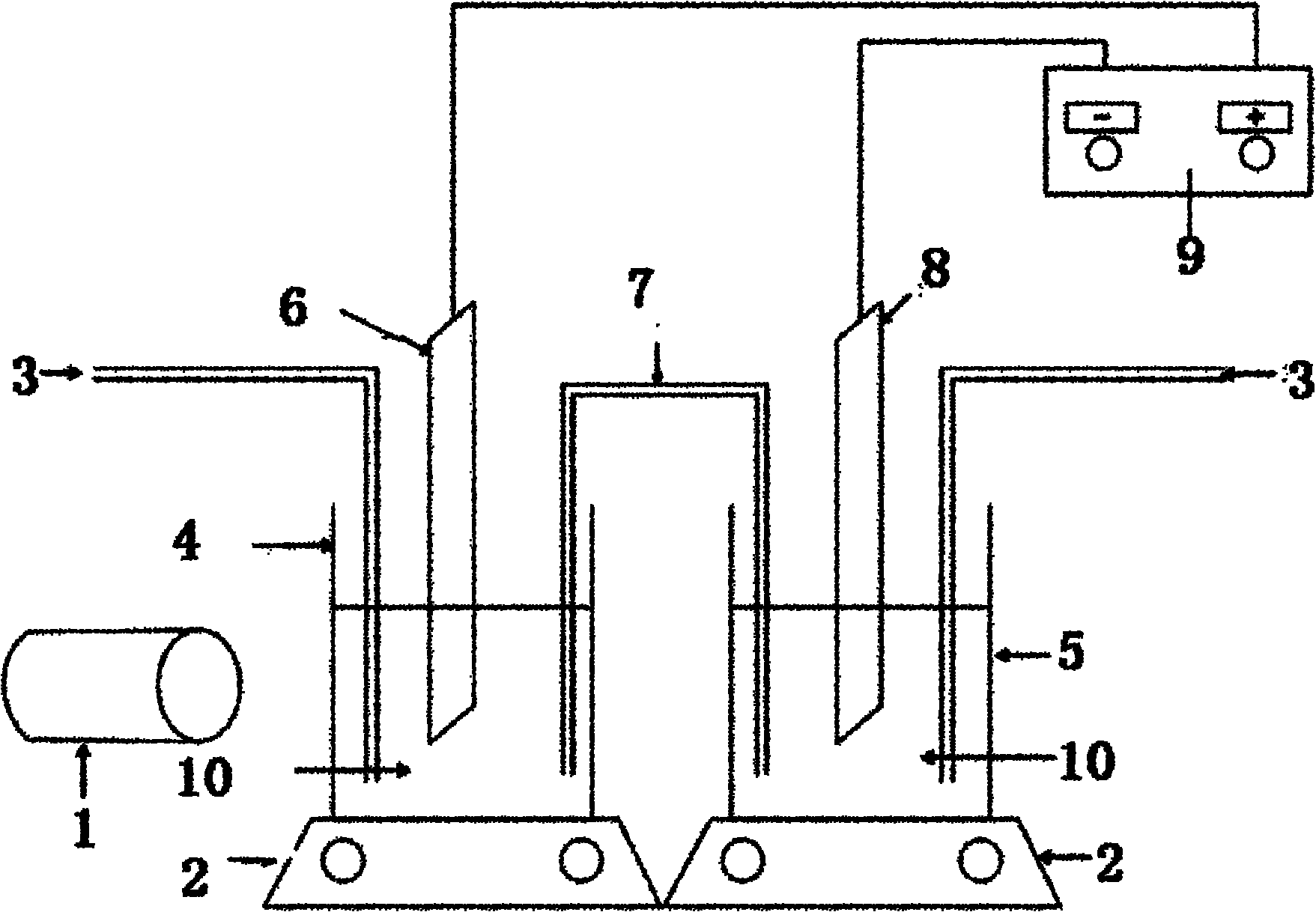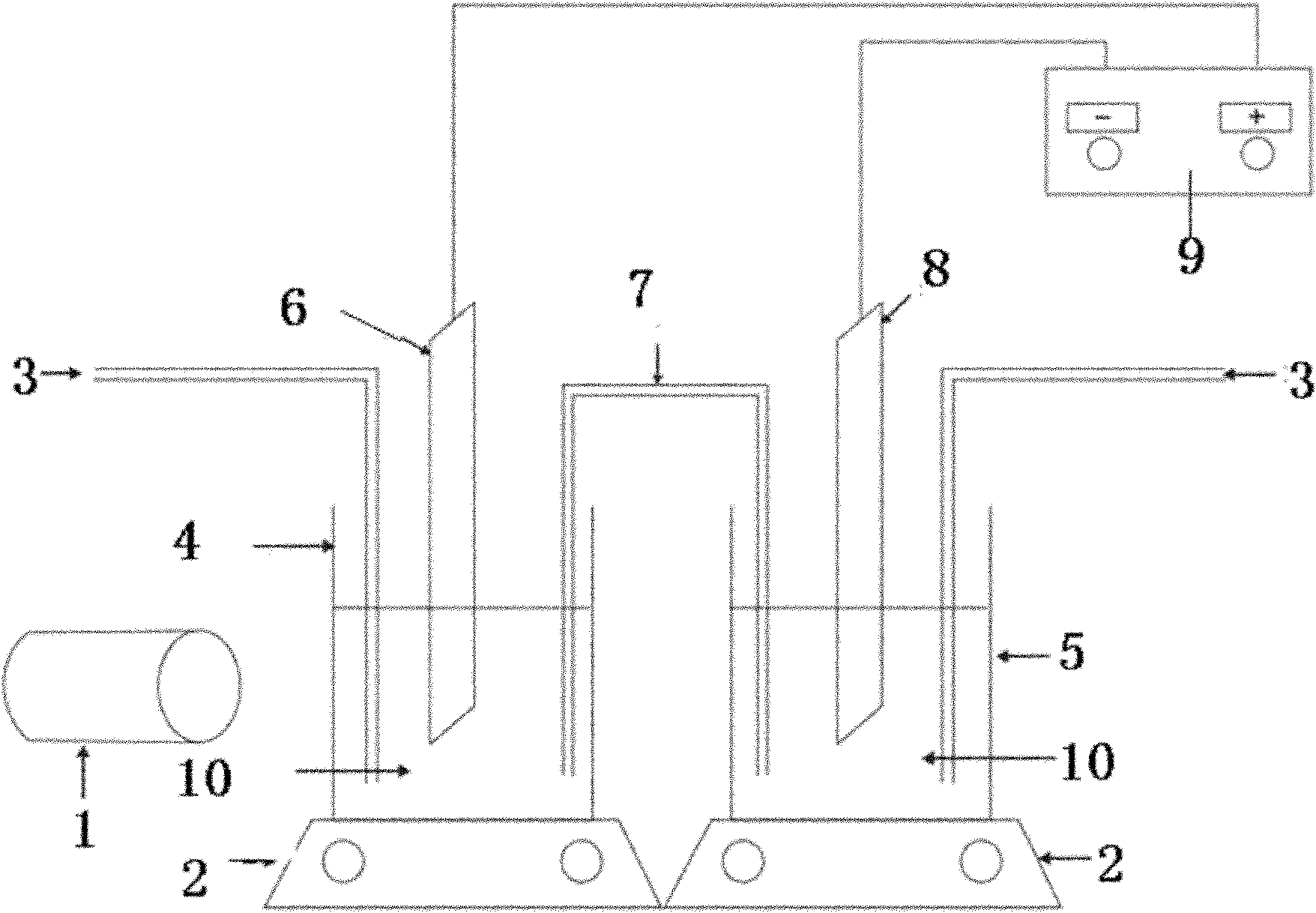Method and device for removing organic matters from water by using double-pool double-effect visible light in response to photo-electro-Fenton reaction
A visible light and water removal technology, applied in chemical instruments and methods, water/sewage treatment, oxidized water/sewage treatment, etc., to achieve high H2O2 concentration, easy control, and compact equipment
Inactive Publication Date: 2011-06-15
HUAZHONG NORMAL UNIV
View PDF9 Cites 40 Cited by
- Summary
- Abstract
- Description
- Claims
- Application Information
AI Technical Summary
Problems solved by technology
Suitable for all kinds of organic wastewater treatment
Method used
the structure of the environmentally friendly knitted fabric provided by the present invention; figure 2 Flow chart of the yarn wrapping machine for environmentally friendly knitted fabrics and storage devices; image 3 Is the parameter map of the yarn covering machine
View moreImage
Smart Image Click on the blue labels to locate them in the text.
Smart ImageViewing Examples
Examples
Experimental program
Comparison scheme
Effect test
Embodiment 1
Embodiment 2
Embodiment 3
the structure of the environmentally friendly knitted fabric provided by the present invention; figure 2 Flow chart of the yarn wrapping machine for environmentally friendly knitted fabrics and storage devices; image 3 Is the parameter map of the yarn covering machine
Login to View More PUM
 Login to View More
Login to View More Abstract
The invention discloses a method and a device for removing organic matters from water by using double-pool double-effect visible light in response to a photo-electro-Fenton reaction. The device comprises a cathode pool, an anode pool, a saturated potassium chloride (KCl) salt bridge, a visible light response semiconductor membrane material anode, a carbon-iron composite material oxygen negative electrode, an air pump, a magnetic stirrer, a direct current stabilized voltage power supply and a visible light source, wherein an anode performs photoelectrocatalysis under the actions of visible light and anode bias voltage to remove organic pollutants from water; the carbon-iron composite material oxygen negative electrode performs cathode potential reduction on O2 under the conditions of external voltage and introduced air to produce hydrogen peroxide which is subjected to an electric Fenton reaction to generate active substances such as hydroxyl radicals and the like capable of effectively removing the organic matters from the water; electrons produced by a photoanode migrate towards an oxygen cathode under the action of anode bias voltage; the O2 is reduced by the electrons on the cathode to generate more H2O2; and the H2O2 produced on the cathode cannot migrate to the anode pool for consumption, so that higher H2O2 concentration is ensured, and the oxidation reaction of the organic matters by electric Fenton is ensured. The method and the device are suitable for treating various types of organic waste water.
Description
A double-cell double-effect visible light response photoelectric Fenton method and device for removing organic matter in water technical field The invention relates to a method and a device for removing organic matter in water by a visible light-responsive double-cell double-effect photoelectric Fenton, belonging to the technical field of water pollution control. Background technique Since Fujishima et al. discovered in 1972 that illuminated TiO2 semiconductor electrodes have the function of splitting water, especially in 1976, Cary et al. successively reported that TiO2 water systems can degrade various refractory organic compounds under ultraviolet light irradiation. The method of treatment has attracted extensive attention. Most of the research work published earlier chose the photocatalytic oxidative degradation of organic matter in the suspension system of nanoparticles in powder state. In recent years, research at home and abroad has mainly focused on catalyst surfa...
Claims
the structure of the environmentally friendly knitted fabric provided by the present invention; figure 2 Flow chart of the yarn wrapping machine for environmentally friendly knitted fabrics and storage devices; image 3 Is the parameter map of the yarn covering machine
Login to View More Application Information
Patent Timeline
 Login to View More
Login to View More Patent Type & Authority Applications(China)
IPC IPC(8): C02F1/461C02F1/72
Inventor 张礼知艾智慧刘伟贾法龙
Owner HUAZHONG NORMAL UNIV
Features
- R&D
- Intellectual Property
- Life Sciences
- Materials
- Tech Scout
Why Patsnap Eureka
- Unparalleled Data Quality
- Higher Quality Content
- 60% Fewer Hallucinations
Social media
Patsnap Eureka Blog
Learn More Browse by: Latest US Patents, China's latest patents, Technical Efficacy Thesaurus, Application Domain, Technology Topic, Popular Technical Reports.
© 2025 PatSnap. All rights reserved.Legal|Privacy policy|Modern Slavery Act Transparency Statement|Sitemap|About US| Contact US: help@patsnap.com


